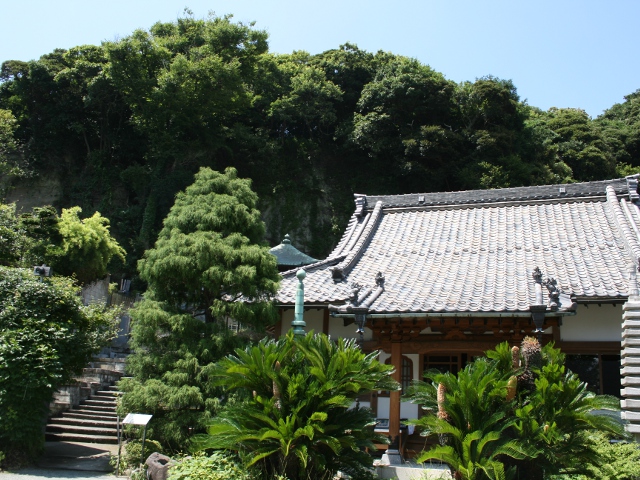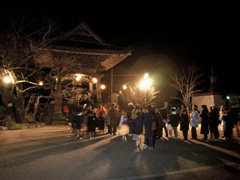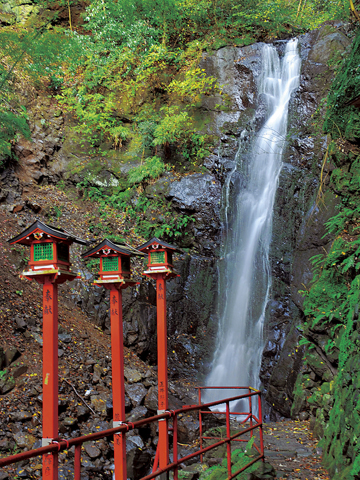
Yakuo Temple
In the first year of Yongin (1293), the statue of Nichiren's grandpupil [Nichizou] Jinjin opened the mountain. The Nichiren Saint statue in the main hall is a rare one with a slightly open mouth. On the right of the precinct stands the service tower of Tokugawa Iemitsu's younger brother Tadashō. In spring, the cherry trees on the approach to the road are beautiful, with shaga in May and rock tobacco in June.





